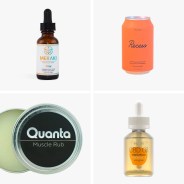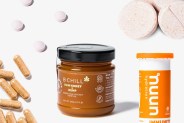Americans are not well. The Centers for Disease Control reports that the number-one cause of death in the U.S. is heart disease, which is linked to poor diet, lack of exercise, stress and obesity. Part of the problem is the fact that the healthcare industry in the U.S. is primarily designed to treat disease, not prevent it.
Dr. Bill Hettler, who cofounded the National Wellness Institute in 1977, realized early in his career that simply writing prescriptions wasn’t helping his patients. “Most of what we were doing was trying to deal with symptoms,” he says. “And I began to really [see that] what was killing the most people in our county was behaviors, and even though we did whatever we could do, it was always too late.”
Costly doctor bills, high insurance premiums and painfully expensive pharmaceuticals have many citizens turning to wellness to improve their health. And while humans have been practicing wellness for millennia, it’s only recently become a major industry. According to the Global Wellness Institute, the wellness industry was last valued at $4.2 trillion as of 2017, the biggest categories being personal care, beauty and anti-aging ($1.1 trillion); nutrition and healthy eating ($702 billion); and fitness and mind-body products ($595 billion).
“People are under ever-increasing amounts of stress and are always in search of a lifeline,” says Toms Shoes founder Blake Mycoskie, who launched his own wellness brand, Madefor, this year. “Companies recognize and market toward this fact. While it’s easier to produce a product aimed at a symptom, I believe most people would prefer to tackle the larger underlying issue, but they just don’t know where to start or how.”
“I believe most people would prefer to tackle the larger underlying issue, but they just don’t know where to start or how.”
That hasn’t stopped consumers from spending. According to the GWI, the industry accounts for more than five percent of global economic output, growing nearly twice as fast as overall global economic growth between 2015 and 2017. Wellness spending has expanded to more than 50 percent of the amount spent on traditional healthcare globally, even though the wellness industry is unregulated and largely ignored by the government and conventional medicine.
However, not everyone can afford to reap the industry’s potential benefits. Many of today’s most exciting wellness products target a small minority of affluent consumers. Consider a month’s supply of stress-reducing supplements from Moon Juice for $49; plant-based meals from Sakara for $70 per day; yoga pants from Lululemon for $118; a stationary bike from Peloton for $2,245 (plus the $39 monthly membership). “There’s an alternative healthcare system that’s going on, and some of it works and some of it doesn’t,” says Bob Roth, CEO of the David Lynch Foundation, which works to expand access to meditation. “Unfortunately, the only people who can get it are the people who can afford it. But everybody should have the benefits of it.”
This is an international problem, but it’s most pronounced in the U.S. According to a paper by John Lynch, a professor of epidemiology and public health at the University of Adelaide in Australia, “the United States is somewhat exceptional in that it is the country where income inequality is the most consistently linked to population health.” And this disparity isn’t stagnant: a 2015 report by the Virginia Commonwealth University’s Center on Society and Health found that income inequality had risen almost every year since 1974.
The high cost of many wellness products, coupled with economic disparity, severely limit the booming industry’s impact on public health. Fortunately, there are plenty of brands working to change the system from within.
 Eleni Debo
Eleni DeboDiet and Food
Diet and wellness go hand-in-hand, but the vast majority of Americans don’t have access to healthy, nutrient-rich food. Grocery stores that sell fresh products are more prevalent in wealthy neighborhoods, and anyone who’s shopped at Whole Foods knows fresh produce usually comes at a premium. “People with middle-to-low incomes have a greater exposure to the energy-dense, economically accessible diets that are also designed to be tasty,” says Gerardo Otero, a professor of international studies at Simon Fraser University and author of The Neoliberal Diet. Fast food and junk food — the foundation of this heavily processed diet — can lead to negative health impacts linked to obesity, such as diabetes, heart disease and cancer.
Many people consider diet an individual choice; if someone is overweight, they should simply eat better and exercise more. “My main argument in The Neoliberal Diet is that this is a simplistic solution that entirely misses the structural, systemic factors affecting how food is produced, processed and distributed,” Otero says.
The effect? Subsidized nutrient-poor fast food runs rampant across America. “Some crops, like corn, are heavily subsidized, so much of food production is molded by this fact, and the lobby groups in the agrifood sector try to make sure that such subsidies stay in place or increase,” Otero says. “One place to start is to eliminate these subsidies. The production of healthy food should be promoted instead.”
Many wellness-focused brands target wealthy consumers with the ability to spend. Cold-pressed juice cleanses from Pressed Juicery cost $34.50 per day; a box of seven to ten healthy snacks from HealthyMe Living costs $27 per box; monthly supplies of superfood powders from Your Super start at $30 per mix (or $528.10 per month for the Ultimate Health Bundle).
But some food companies are trying to find a middle road — operating within the current system, producing healthy yet affordable alternatives to traditional fast food. Impossible Foods and Beyond Meat both offer plant-based foods that mimic animal proteins by mixing processed vegetables with fats, minerals and carbohydrates to replicate the taste and texture of meat.
“Meat imitations are still ultra-processed foods.”
The results are impressive: Beyond Meat’s cholesterol-free burgers, sausage and meatballs have more protein and iron and less saturated and total fat than their traditional counterparts. The price of a 10-pack of burgers comes out to $1.60 per patty, comparable to the cost of ground beef in some areas — and the vegan products are available both at grocery chains like Walmart, Target and Kroger and at fast-food chains like Dunkin’, Carl’s Jr. and Subway.
“It is well-known that the majority of food consumed today is processed in some way before it reaches consumers, including commercially raised meat,” says a Beyond Meat spokesperson. “We believe our process allows us to produce ‘meat’ that is more nutritious, more sustainable and more humane.”
Yet while the increased accessibility of healthier plant-based foods may be seen by some as a positive sign, Otero thinks more needs to be done. “Meat imitations are still ultra-processed foods, and they are clearly within the paradigm of the neoliberal diet,” he says. “This amounts to patch work, in my view. What we need is to transcend the neoliberal diet.”
Personal Care
Americans aren’t just starting to pay more attention to what they eat. They’re also spending more than ever on unregulated dietary supplements. “People now understand and realize that nutrition is a big part of happiness, healthiness and wellness,” says Gideon Akande, a fitness and wellness coach named a Next Top Trainer by Men’s Health. “And as a result, even though some people are not necessarily interested in exercise, they are interested in feeling better, sleeping better and having better energy, and are open to attacking that by way of nutrition and adjusting what they’re putting into their body as fuel.”
According to global management consulting firm L.E.K. Consulting, the average consumer spent more than $100 per month in 2018 on nutritional supplements like vitamins, minerals and herbal products, along with skin-care products. So it’s not surprising to see how much money is being thrown at the most well-funded, private venture-capital-backed supplement brands. According to a list compiled by CB Insights in 2017: Joint Juice, a company that sells six-packs of a glucosamine supplement drinks for just over $5, received $123.8 million; FRS Healthy Energy, which sells 30-packs of energy chews for $21, received $92 million; PanTheryx, Inc., a biotech company that specializes in nutrition-based products to benefit microbiome health, received $76.28 million.
Then there are the likes of Moon Juice, a divisive juice-bar-turned-supplement brand based in Los Angeles that sells herbal adaptogens starting at $38 to $60 for a monthly dose. “In the past two years, our sales growth has been exponential,” Moon Juice founder Amandan Chantal Bacon told Huffington Post in a 2019 interview. “Over 50 percent of the business is direct-to-consumer, and our stores are seeing double-digit comp growth.” (When Gear Patrol asked Moon Juice about the growth of the luxury wellness industry, the brand declined to comment.)
“We encourage people to be skeptical of everything they put in and on their bodies.”
A competitor, HUM Nutrition, specializes in nutritional wellness and creates products to support skin, hair, body and mood. But its products are sold at more accessible prices, ranging from $10 to $40 for a month’s supply. “Additionally, we offer free access to RD [registered dietitian] nutritionists to any visitor of our website — consumer or not,” says CEO Walter Faulstroh. “To date, we have provided education to over one million people without charging them, which we are very proud of.”
Along with matching consumers to an RD nutritionist, the brand has a blog that features contributions from science and health experts. “These resources help us reach audiences that previously were perhaps not able to participate and gives them expert advice they can trust,” Faulstroh says.
Some brands that offer high-priced pills back up their wares with expensive science. New York-based Elysium Health — which CB Insights reports received $31.1 million in private VC funding — offers supplements that target the effects of aging for a $60-per-monthly-bottle premium. (If you buy a year’s supply in advance, it’s $480.)
“When we established Elysium, we focused on targeting fundamental processes of aging because these interconnected processes present the greatest opportunity for potential positive impact,” Elysium CEO Eric Marcotulli says.
The brand’s first product, Basis, increases levels of NAD+, a coenzyme that is required for hundreds of metabolic processes but declines as we age. Elysium’s newest product, Matter, developed in partnership with the University of Oxford, has a B-vitamin complex that slows gray-matter atrophy in the brain, something associated with memory decline in older people.
“We encourage people to be skeptical of everything they put in and on their bodies,” says Marcotulli. “By setting new standards internally — through our commitments to human clinical research, third-party testing for purity and quality, and third-party seals like NSF for Sport certification and the Good Housekeeping seal for Innovation — we are working to establish new standards for the entire industry as well.”
The Mind-Body Connection
Science sells supplements, but that’s not the only form of wellness it’s being leveraged to promote. Madefor utilizes research on neuroplasticity (the brain’s ability to form new connections) to help people change habits and promote physical and mental wellbeing. After being diagnosed with mild depression in 2017, founder Blake Mycoskie sought out experts in the field and implemented their insights in his everyday life.




